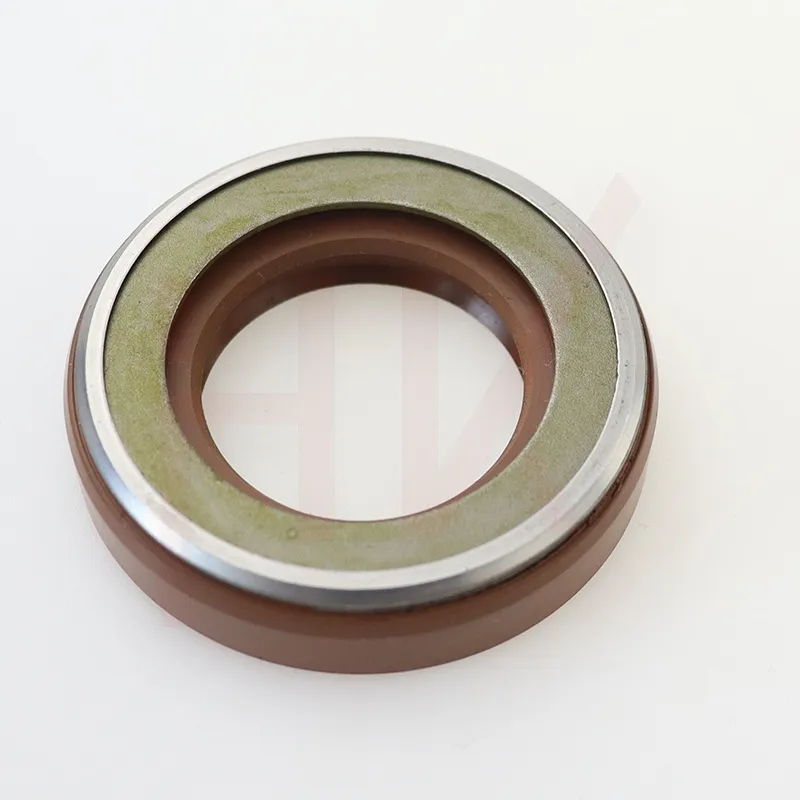Dec . 07, 2024 00:24 Back to list
hydraulic oil seal material
Understanding Hydraulic Oil Seal Materials
Hydraulic systems are pivotal in various industrial applications, providing the necessary force and movement for machinery to operate effectively. A crucial component of these systems is the hydraulic oil seal, which prevents fluid leakage, maintains pressure, and protects against contaminants. The materials used in hydraulic oil seals play a vital role in determining their performance, longevity, and overall reliability. This article delves into the different materials utilized for hydraulic oil seals and their respective characteristics.
Common Materials for Hydraulic Oil Seals
1. Nitrile Rubber (NBR) Nitrile rubber, often referred to as NBR, is one of the most widely used materials for hydraulic oil seals. It has excellent resistance to petroleum-based fluids, making it suitable for hydraulic oils and greases. NBR seals can withstand temperatures ranging from -40°C to +100°C. They also exhibit good mechanical strength and abrasion resistance, which is crucial in high-pressure environments. However, NBR is not suitable for use with phosphate esters and certain organic solvents.
2. Polyurethane (PU) Polyurethane is another popular material for hydraulic seals, known for its outstanding wear resistance and mechanical properties. PU seals demonstrate excellent elasticity and can handle a broader temperature range, typically from -30°C to +90°C. Their superior resilience and ability to maintain shape under pressure make them ideal for dynamic applications where movement is frequent. Furthermore, polyurethane can resist oil, grease, and fuel, although they may not perform as well as nitrile in all cases.
3. Fluoroelastomers (FKM) Fluoroelastomers, commonly known as FKM, offer remarkable chemical resistance, making them suitable for hydraulic systems that utilize aggressive fluids or operate in extreme temperatures. FKMs can endure high temperatures, often up to +200°C, and maintain performance under challenging conditions. While they are highly durable and versatile, FKMs can be more expensive than other materials, which may be a consideration when selecting seals for your hydraulic system.
4. Silicone Rubber Silicone rubber is unique in its ability to perform over a wide temperature range, typically between -60°C and +200°C. It provides excellent flexibility and is inherently resistant to aging, ozone, and UV exposure. However, silicone is not as resistant to abrasion and may not be the best choice for applications involving high mechanical stress. Therefore, silicone seals are frequently used in static sealing applications rather than dynamic contexts.
hydraulic oil seal material

5. PTFE (Polytetrafluoroethylene) PTFE is well-known for its exceptional chemical resistance and low friction properties. Seals made from PTFE can operate in various temperatures and provide a long service life under difficult conditions. They are ideal for applications involving strong acids and bases, making them a preferred choice in many chemical processing industries. However, PTFE seals require careful installation as they can be more prone to cold flow and may not compress as readily as other materials.
Selecting the Right Material
The selection of the appropriate seal material for hydraulic applications depends on several factors, including fluid compatibility, temperature, pressure, and the specific environment in which the equipment operates. It is essential to consult with manufacturers or material specialists to ensure that the chosen seal material meets all operational requirements and will provide the necessary longevity and performance.
Moreover, regular maintenance and inspection of hydraulic seals are crucial, as wear and tear can lead to leaks, which may compromise the functionality of the entire system. Understanding the properties of different materials can help engineers make informed decisions that ultimately enhance the efficiency and reliability of hydraulic systems.
Conclusion
The choice of hydraulic oil seal material is a critical factor in ensuring the smooth operation of hydraulic systems. By understanding the unique characteristics and benefits of various materials, manufacturers and engineers can select the most suitable option for their specific needs, enhancing the overall efficiency and durability of their equipment. Proper material selection, combined with routine inspections, will help mitigate the risks associated with fluid leakage and system failure.
-
TCN Oil Seal Metal Ring Reinforcement for Heavy Machinery
NewsJul.25,2025
-
Rotary Lip Seal Spring-Loaded Design for High-Speed Applications
NewsJul.25,2025
-
Hydraulic Cylinder Seals Polyurethane Material for High-Impact Jobs
NewsJul.25,2025
-
High Pressure Oil Seal Polyurethane Coating Wear Resistance
NewsJul.25,2025
-
Dust Proof Seal Double Lip Design for Construction Equipment
NewsJul.25,2025
-
Hub Seal Polyurethane Wear Resistance in Agricultural Vehicles
NewsJul.25,2025
-
The Trans-formative Journey of Wheel Hub Oil Seals
NewsJun.06,2025
Products categories
















